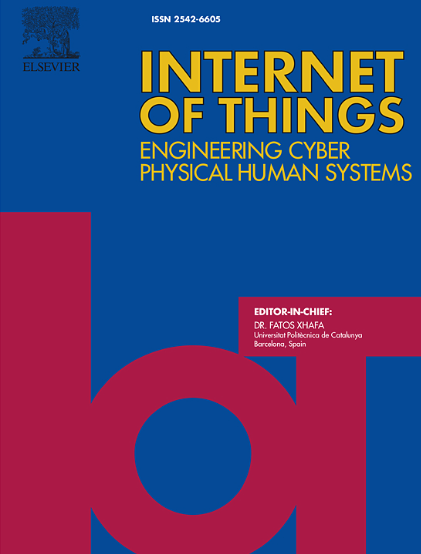使用EDHOC的低功耗物联网网络的轻量级认证密钥交换
IF 6
3区 计算机科学
Q1 COMPUTER SCIENCE, INFORMATION SYSTEMS
引用次数: 0
摘要
能源效率对于受限网络中的电池供电设备至关重要,特别是在智能农业和智能城市场景中。为了最大限度地延长电池寿命并确保通信安全,轻量级密钥交换协议(如Ephemeral Diffie-Hellman Over COSE (EDHOC))至关重要。为了进一步优化能源效率,EDHOC可以与静态上下文报头压缩(SCHC)协议结合使用,该协议旨在压缩和分片数据包。这项工作表明,EDHOC和SCHC可以成功地集成在物联网(IoT)场景中建立安全会话密钥。所获得的结果表明,安全机制可以在资源有限的设备中以最小的能量影响实现,从而延长电池寿命。实验表明,可以将EDHOC交换消息压缩到54%,并将能耗降低20%,同时以经济有效的方式保持CPU时间水平。通过根据这些指令设计物联网设备,可以减少整体环境足迹并延长设备的使用寿命。本文章由计算机程序翻译,如有差异,请以英文原文为准。
Lightweight authenticated key exchange for low-power IoT networks using EDHOC
Energy efficiency is crucial for battery-powered devices in constrained networks, especially in Smart Agriculture and Smart Cities scenarios. To maximize battery life and ensure secure communications, lightweight key exchange protocols like Ephemeral Diffie–Hellman Over COSE (EDHOC) are essential. To further optimize energy efficiency, EDHOC can be combined with the Static Context Header Compression (SCHC) protocol, which is designed to compress and fragment data packets. This work demonstrates that EDHOC and SCHC can be successfully integrated to establish secure session keys in Internet of Things (IoT) scenarios. The attained results showcase that security mechanisms can be implemented in resource-limited devices with minimal energy impact, extending battery life. The experiments showed it is possible to compress the EDHOC exchange messages up to a 54% and to reduce the energy consumption by a 20%, while maintaining the CPU time levels in a cost-effective way. By designing IoT devices with these directives, it is possible to reduce the overall environmental footprint and increase the devices’ operational lifespan.
求助全文
通过发布文献求助,成功后即可免费获取论文全文。
去求助
来源期刊

Internet of Things
Multiple-
CiteScore
3.60
自引率
5.10%
发文量
115
审稿时长
37 days
期刊介绍:
Internet of Things; Engineering Cyber Physical Human Systems is a comprehensive journal encouraging cross collaboration between researchers, engineers and practitioners in the field of IoT & Cyber Physical Human Systems. The journal offers a unique platform to exchange scientific information on the entire breadth of technology, science, and societal applications of the IoT.
The journal will place a high priority on timely publication, and provide a home for high quality.
Furthermore, IOT is interested in publishing topical Special Issues on any aspect of IOT.
 求助内容:
求助内容: 应助结果提醒方式:
应助结果提醒方式:


